When Gorgeous Architectural Landmarks Are Also Monuments to Fascism
In Asmara, Eritrea, preservationists are grappling with the tricky task of celebrating Futurism.
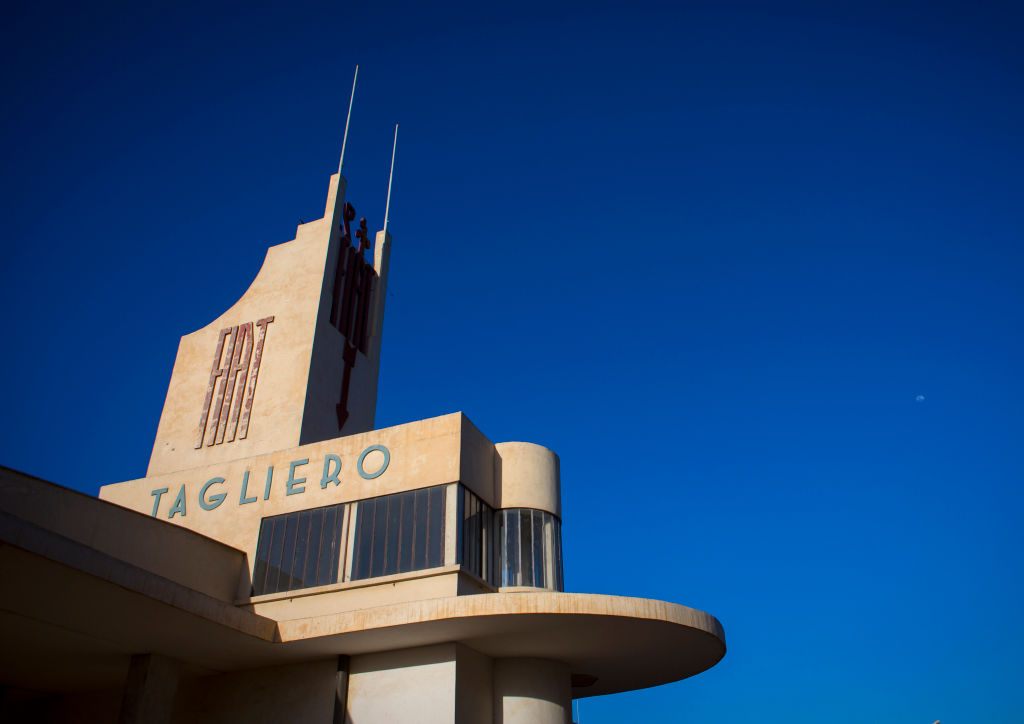
Walking down Harnet Avenue in Asmara, Eritrea, you’ll pass a distinctly angular building, and then another whose facade undulates more like a wave. The exteriors within view, though faded, are painted with noteworthy colors: pistachio, peach, a deep persimmon. Windows are often round and curious, like a submarine’s. At once nostalgic and neglected, the overall feel is as if the city of Asmara has been frozen in time.
Futurism, the cultural and artistic movement birthed in 20th-century Italy, espoused a detachment from the past. By championing virtues such as speed, technology, youth, and flight, the Futurists worked to cement Italy’s status as highly advanced and, thus, superior. Though Futurism flourished in many forms, architecture and urban design were arguably the most visible displays of this imagined Italian dominance. The buildings and public plazas constructed according to Futurist ideals were more than just experiments with dynamic design. In Asmara, the handsome structures built between 1935 and 1941 became multi-faceted tools of oppression.
Eight decades later, these Italian-designed edifices are still standing, albeit in need of rehabilitation. But preserving Asmara’s Futurist architecture necessarily preserves the fascist agenda that erected them in the first place, which prompts several, complex questions: What are the ethics of stabilizing public spaces that were intended to destabilize an entire people? And is it possible to reinforce the beauty of these buildings without romanticizing their politics?
In July 2017, Asmara received UNESCO’s World Heritage Site designation for its modernist architectural marvels. Now that the dazzling gems of Asmara’s streets—from the Cinema Impero movie palace to the Fiat Tagliero service station—have been established as essential parts of Eritrean heritage, taking an honest look at the country’s past will hopefully propel it forward into a brighter future.
The Asmara Heritage Project, created in 2014, is working toward just that. Edward Denison is an associate professor at the University College London’s Bartlett School of Architecture and a principal consultant to the AHP, which prepared the UNESCO nomination. In the short year and a half since Asmara’s official designation, the title’s effects on the city is already evident, according to Denison. “It seems to be having an impact on international perceptions of Asmara, which could translate into tourist numbers,” he says, though tourism is not the priority. The main reason AHP sought out World Heritage status “was to overhaul the outdated building regulations and related legislation.” But a potential upside of tourist dollars, coupled with a large-scale reinvention of the local construction industry, is that Asmara would be able to more properly invest in itself. And that’s an advantage whose benefits may outweigh its costs.
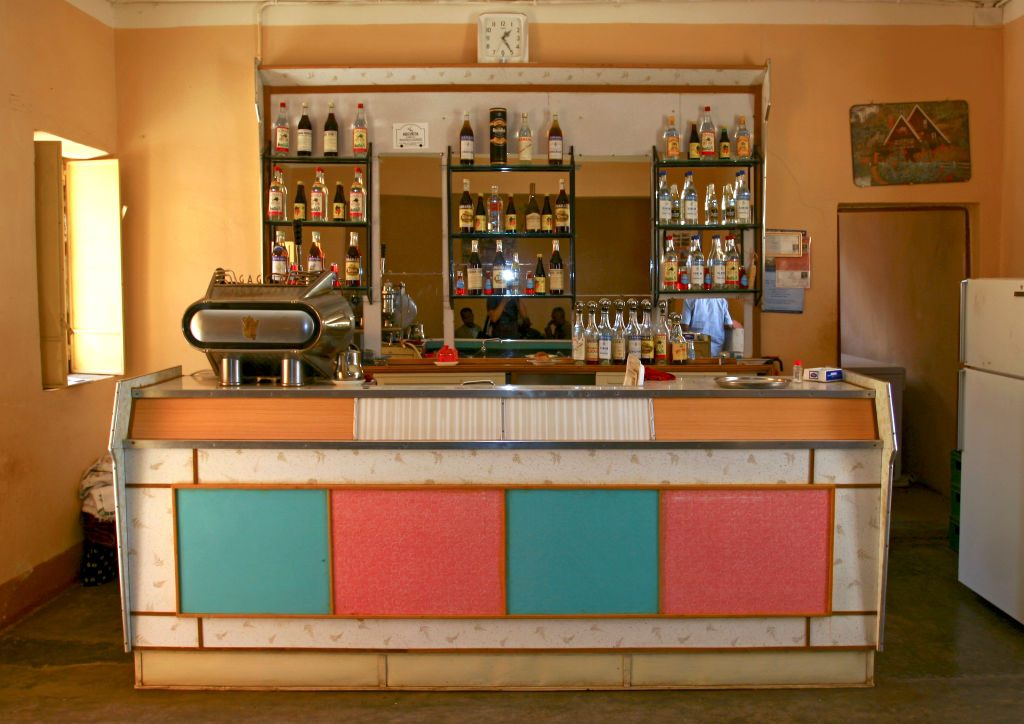
When Benito Mussolini declared the joint-region of Somalia, Ethiopia, and Eritrea “Italian East Africa” in 1936, he was aware that Italians back home were watching his expansionist plan unfold from afar. So Mussolini used architecture as a vehicle to influence the public, to prove to his country that his far-right ideals were sound. To this end, Italian architects were encouraged to settle in Asmara and override its established environment in the name of Futurist experimentation. Mussolini’s hope was that Italians in Italy would be seduced by the beauty of the buildings he commissioned in Asmara, which symbolized the spirited momentum of his fascist politics. If Mussolini’s countrymen believed in skillful Italian architects, surely they’d believe in his obsession with radical ultranationalism, too.
Medhanie Teklemariam, director of the AHP, says Futurism’s role in Mussolini’s fascist regime cannot be underestimated. “The connection between Italian Futurism and fascism is well known, but we can say that the two shared many ideals and that the relationship between them was direct,” he says. “Futurism and fascism had some common aspects: the blind activism, the irrationalism, idolization of the mechanization and war. But also remarkable differences: the state-worship and fascist hierarchy compared with the general anarchy of Futurism.”
The presence of Italian industry was impossible to miss in Asmara during this period. Italians established factories dedicated to the production of pasta, buttons, cooking oil, and tobacco. According to the 1939 census, 53,000 of Asmara’s 98,000 residents were Italian. Fast forward to today, and the city’s streets are still lined with coffee bars, pizzerias, and gelato parlors.

Asmara’s Harnet Avenue (formerly Viale Mussolini), Sematat Avenue (formerly Viale de Bono), and Mai Jah Jah fountain (formerly La Fontana) were all designed as public spaces where the masses could celebrate Italy’s triumph through marches and ceremonial events. “Viale Mussolini [was] the city’s principal thoroughfare and parading ground—literally, for the people but symbolically, for the fascist regime,” Teklemariam says. Many buildings in the city center were once inscribed with Mussolini’s name, and boasted fascist political motifs (later removed during the British administration).
In spite of this dark history, today the people of Eritrea take great pride in the buildings designed by Italian settlers, and understandably so: not only is Asmara’s architecture beautiful, it is the most comprehensive collection of modernist architecture in the world. And though the Italians imagined it this way, it was the native Eritreans who actually brought it to life.
“The number of Eritrean laborers in the 1940s was 39,300, compared with 8,380 Italians,” Teklemariam notes. “Eritrean laborers were the predominant workforce on buildings sites, carrying out manual, semi-skilled, and skilled tasks from digging trenches to laying infrastructure and erecting buildings.” Asmara’s prized buildings were all built in a six-year period; without the labor of the native people, Italy alone could not have achieved this pace of urban development. Today’s Eritreans remember their fathers and grandfathers’ roles in the building of Asmara.
Rather than allow these historic buildings, neglected but untouched, to fall into greater disrepair, most Eritreans feel it is better to preserve them, and ultimately reframe what they represent. “Eritreans distinguish the political motivation from the built environment,” Teklemariam says. “We feel that these buildings and infrastructure were built by our fathers and forefathers, and have no negative attitude towards the buildings.”
Still, Asmara’s layout is decidedly not neutral. The labor—and displacement—of native Eritreans lies buried in the blueprint of the city. Fassil Demissie, an associate professor of public policy at DePaul University, argues that it’s important to remember that colonial powers conquered places not only through physical control of people, but through urban planning too. “Colonialism requires highly rigorous planning,” Demissie says. “[Asmara’s architecture] was never meant for the entire population.” The Italian government intentionally designed the city based on racially segregated zones; today’s Aba Shawl district was known as the indigenous quarter during the Italian colonial era, and was deprived of proper infrastructure and amenities. Unsurprisingly, most of the stunningly modernist architecture Asmara is celebrated for is found in the city center (read: the European zone).
“Eritrea is the first African state to petition UNESCO to have the city designated as a World Heritage Site for fascist architecture,” Demissie says. “No country in the world today has designated fascist architecture for a World Heritage Site. Not even the Italian government in Italy.” This selective memory, which prioritizes the beauty of the buildings over the ugliness of colonialism, is in line with how Italian people remember this mid-20th century occupation. “Italians are very fond of Eritrea,” Demissie says. “They don’t want to remember the fascist part—even with Italians today there’s not a lot of sentiment. But there is a special place in their heart for Eritrea.”
Rebranding Asmara is a complicated pursuit, one that depends on eschewing stories of conflict in favor of ones that present Asmara as precious, albeit challenged. The truth hangs somewhere in the balance. In a recent paper, Demissie argues that this UNESCO-approved framing of Asmara is “geared to reshaping and manipulating history consistent with the official story of the ruling party… the complex and contested nature of its history, its subjugated people and their narrative has been homogenized and standardized in favor of the official narrative of the state.”
To the Asmara Heritage Project’s credit, the Aba Shawl zone is included in the UNESCO World Heritage Site distinction. Another element of AHP’s master plan is to conserve Asmara’s relatively healthy buildings while also developing underserved, indigenous areas like Aba Shawl. Including the spaces originally intended for those with indigenous heritage is essential. Without them, what would UNESCO be preserving? European history… in Africa?

Admittedly, the agenda behind UNESCO’s decision to name Asmara a World Heritage Site comes with an interest in making the city attractive to tourists, but the addition of a modernist site in Africa to the World Heritage List is clearly significant. As Teklemariam points out, it “challenges some the fundamental principles underpinning the heritage industry and calls for a decentering of modernist history to more fairly reflect and better understand global encounters with modernity.”
UNESCO itself acknowledges this broadened definition of modernism, calling Asmara “an exceptional example of early modernist urbanism at the beginning of the 20th century and its application in an African context.” For this reason, among others, allowing the Futurist architecture of Asmara to waste away seems misguided.
Eritrea’s history as a country once under the boot of Italian fascism is not one to be romanticized, but preserving the architecture that this occupation spawned is a conscious choice to hold onto the very best part. Part of responsible restoration, then, becomes about rewriting the city’s story from the perspective of the oppressed. Asmara’s buildings, built in the fascist imagination, will be restored and tourism may spike, but at least the conversation will not overlook the Eritrean people who built Asmara and sustained its culture.
The only way to responsibly think about the future of Asmara is to take the past into account. So, fittingly, Eritreans and Italians are now working together. To prepare the Conservation Master Plan (which includes conservation guidelines and regulations), the AHP is collaborating with a team of Italian experts. Eritreans and Italians involved in the project have been able to exchange knowledge, skills, and technology. This collaboration illustrates the tremendous change Asmara has undergone since Eritrea officially achieved independence in 1991. Streets have been repaved, the water supply system improved, and a sense of hope has been reinstated. Says Teklemariam, “Asmara will have a bright future by safeguarding its rich urban heritage and using that as leverage for fostering economic and social development.”
Correction: An earlier version of this story misspelled the surname of the director of the Asmara Heritage Project. It is Teklemariam, not T. Mariam.



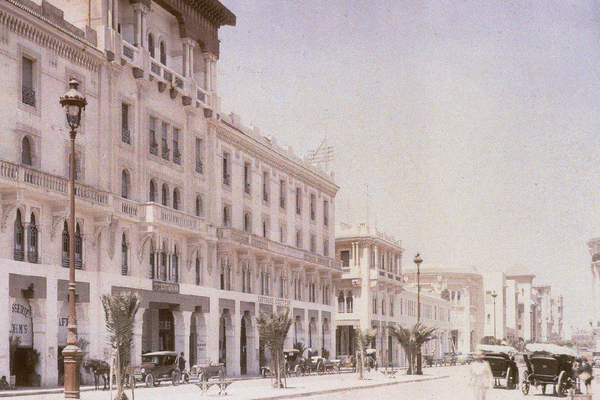
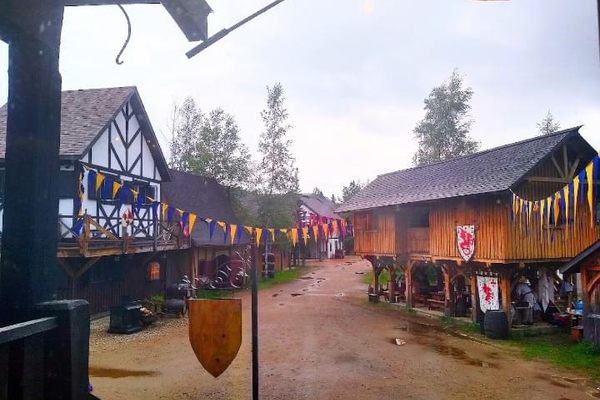
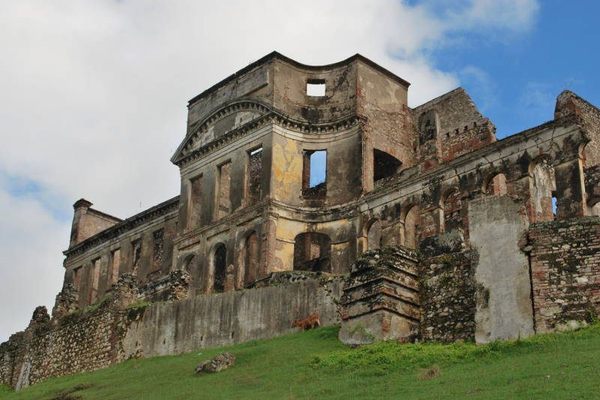
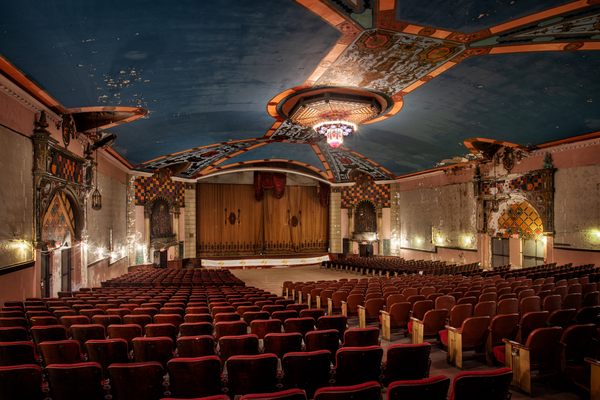















Follow us on Twitter to get the latest on the world's hidden wonders.
Like us on Facebook to get the latest on the world's hidden wonders.
Follow us on Twitter Like us on Facebook